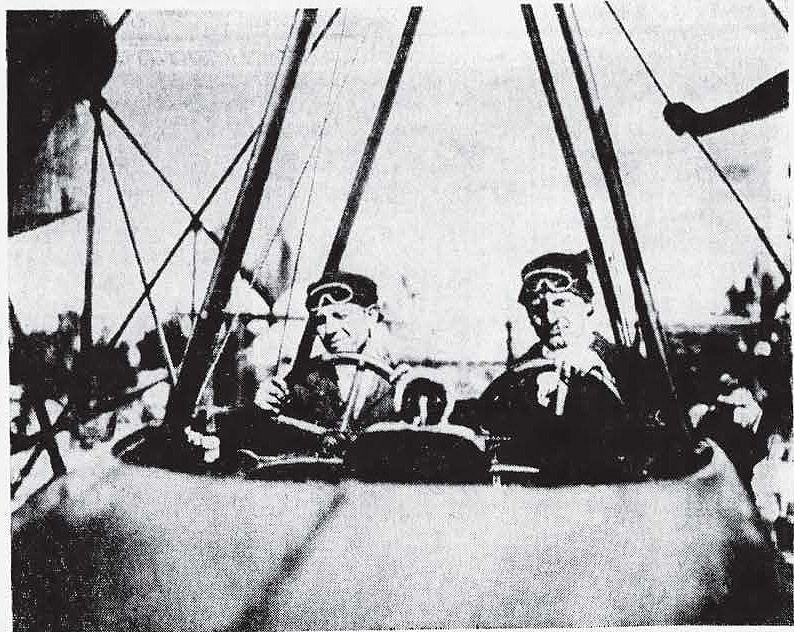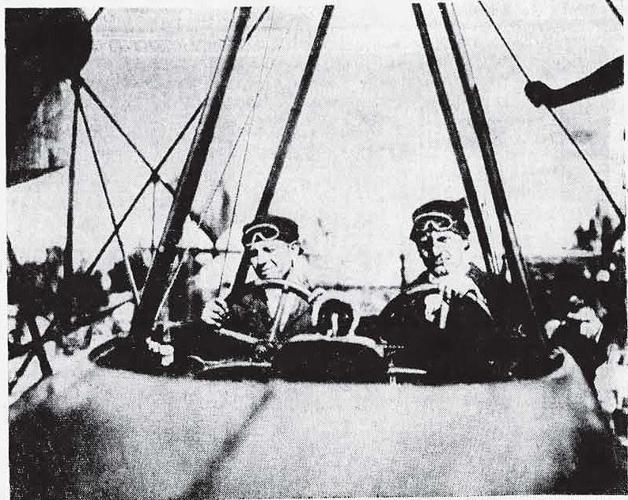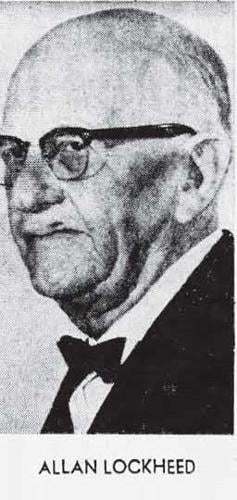Fifty years ago, a reporter at the Arizona Daily Star looked back to 1910, when the Lockheed brothers first began their enterprise.
In 1968, one of the famous brothers was still alive and in Tucson to talk about the history of aircraft flying and building. He also talked a bit about the derring-do of those early days.
From the Arizona Daily Star, Friday, April 5, 1968:

Pioneer Aircraft Manufacturer Recalls Early Day Adventures
Lockheed Enterprise Began in 1910
By JUDY DONOVAN
When the famous Lockheed brothers went into the airplane building business 52 years ago, they had no inkling the firm they founded would someday become the nation’s 24th largest industrial corporation and gross tens of billions of dollars.
Tucsonan Allan H. Lockheed, the surviving brother of a team that resembled their contemporaries, the Wright Brothers, recalls bittersweet memories of success and failures during a lifetime in aviation as pioneer aircraft designer, builder and pilot since 1910.
The Lockheeds’ original venture in aircraft was in San Francisco in 1912, a bare nine years after Kittyhawk, when Allan and Malcolm Lockheed hand-built their first “aeroplane.” In 1915 they carried passengers for the World’s Fair in the Golden Gate City — “about 600 passengers and an equal number of free-loaders” — and in 1918 the brothers debuted a successful two-engined seaplane, an enormous ship for its day with two 150hp. engines.
A year alter in Santa Barbara, the Lockheed brothers (who still spelled their names in the old Irish way — Loughead) were called upon to take the visiting King and Queen of Belgium for an air tour of the city. Donning long leather coats, goggles and chinstrap helmets, the game monarchs boarded the Lockheed 10-seat seaplane in the only flight they made together in their U.S. tour.
The junket was an unqualified success and the rulers rewarded the Lockheed with the Belgian Order of the Golden Crown medal — a cherished memento still owned by Allan. The maintenance crewmen of the historic flight were given $100 in gold coin, and the intrepid Lockheeds were made members of the Aero Club of Belgium.
“There were many times during flights in those days when I had to set that seaplane down in the channel between Santa Barbara and the islands,” Lockheed recalled. “Long before there was any offshore oil exploration there, I could spot the oil slicks from those underwater sources. Whenever I lost an engine, I’d head for a slick because the oil tended to smooth the waves down, making an easier landing.”
The high risk involved in flying the early planes brought many of Lockheed’s aviation colleagues to a quick death. “Those who survived had an instinct about the unreliability and frailty of their airplanes,” he commented. “We always shipped the planes between exhibitions instead of ferrying them, because the engines would probably only fly a few hours before quitting. I always piloted them as if the engines were going out at any moment. And I’ve never had a serious accident.”
Lockheed’s fancy for the new flying machines was born in 1910 at a time when airplanes were as new and captivating to young men’s imaginations as space travel is the the youngster of the 1960s. Drafted into assisting the flight of a 25-year-old pilot on the outskirts of Chicago 58 years ago, Lockheed was asked to coordinate the ailerons while the aviator handled the elevator and rudder. The aileron wires were disconnected and while sitting behind the pilot, young Lockheed manipulated them by moving his entire body to the right or left, causing the plane to bank in either direction.
Even before this unprecedented and extraordinary flight, the lure of aviation was enough to prompt Lockheed to sell his San Francisco car rental service and move to Chicago to pursue aviation as a $100 per minute county fair exhibition flyer.
Although he hasn’t flown since the 1930s, Lockheed probably is the only living member of the Early Birds, an aviation club of old-time fliers who piloted before 1919 in the days when neither a license or a logbook were known.
A few years after his daring initiation to flight in Chicago, his brother Malcolm developed and patented the Lockheed four-wheel hydraulic brakes — still the standard system for automobiles all over the world, and another enterprise by the brothers that grossed billions of dollars.
During the roaring 20s, there were only about six major aircraft companies, but the Lockheed planes were considered the ships with the best flying qualities.
“Everyone who wanted to make a record came to Lockheed because we had the kind of planes that could do it,” Lockheed commented. “The Lockheed models were used by Charles Lindbergh, Frank Hawks, Amelia Earhart who used a Lockheed Vega to make the first Atlantic flight by a woman, and Wiley Post whose famous Vega ‘Winnie Mae’ took him around the world twice ‚ one of them a solo.”
Allan Lockheed remained active in the corporation until 1929 when a merger, coupled with the Depression, caused total failure and bankruptcy. After the company was reorganized and retaining the Lockheed name, the firm zoomed into the 30s with the development of some of the most famous planes in aviation history including the only twin-engine fighter used by the Allies in World War II.
Lockheed Aircraft also made the first jet fighter in the U.S. the P80 which was used extensively in the Korean War. Later it turned out the familiar Constellation for commercial airlines, one of the most successful multi-engine transports ever produced in this country.
The little plane-making company the Lockheed created in the dawn of aviation has just entered a new era with the recent announcement of the largest commercial airplane order in history — contracts for 144 new Lockheed trijet L1011s, worth $15 million each.
People are also reading…
The story has all the makings of a movie.
Johanna Eubank is an online content producer for the Arizona Daily Star and tucson.com. Contact her at jeubank@tucson.com
About Tales from the Morgue: The "morgue," is what those in the newspaper business call the archives. Before digital archives, the morgue was a room full of clippings and other files of old newspapers.











